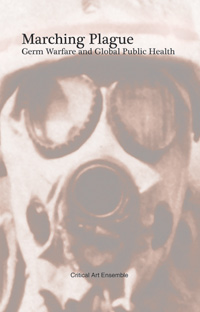Roland Barthes, Image Music Text(1977)
Wednesday, June 20, 2007
 Image Music Text brings together major essays by Roland Barthes on the structural analysis of narrative and on issues in literary theory, on the semiotics of photograph and film, on the practice of music and voice.
Image Music Text brings together major essays by Roland Barthes on the structural analysis of narrative and on issues in literary theory, on the semiotics of photograph and film, on the practice of music and voice.
Throughout the volume runs a constant movement from work to text: an attention to the very 'grain' of signifying activity and the desire to follow - in literature, image, film, song and theatre - whatever turns, displaces, shifts, disperses.
Stephen Heath, whose translation has been described as 'skilful and readable', is the author of Vertige du déplacement, a study of Barthes. His selection of essays, each important in its own right, also serves as 'the best..... introduction so far to Barthes' career as the slayer of contemporary myths'.
Share Image Music Text via demonoid or karagarga.
at 2:57 PM
GOOD COPY BAD COPY - a documentary about the current state of copyright and culture
Saturday, June 9, 2007
http://www.goodcopybadcopy.net/
Featuring, in order of appearance: DR LAWRENCE FERRARA, Director of Music Department NYU
DR LAWRENCE FERRARA, Director of Music Department NYU
PAUL V LICALSI, Attorney Sonnenschein JANE PETERER, Bridgeport Music
JANE PETERER, Bridgeport Music
DR SIVA VAIDHYANATHAN, NYU GIRL TALK, Musician
GIRL TALK, Musician
DANGER MOUSE, Producer
DAN GLICKMAN, CEO MPAA
ANAKATA, The Pirate Bay
 TIAMO, The Pirate Bay
TIAMO, The Pirate Bay
RICK FALKVINGE, The Pirate Party LAWRENCE LESSIG, Creative Commons
LAWRENCE LESSIG, Creative Commons
RONALDO LEMOS, Professor of Law FGV Brazil CHARLES IGWE, Film Producer Lagos Nigeria
CHARLES IGWE, Film Producer Lagos Nigeria
MAYO AYILARAN, Copyright Society of Nigeria
OLIVIER CHASTAN, VP Records
JOHN KENNEDY, Chairman IFPI
SHIRA PERLMUTTER, Head of Global Legal Policy IFPI PETER JENNER, Sincere Management
PETER JENNER, Sincere Management
JOHN BUCKMAN, Magnatune Records
BETO METRALHA, Producer Belem do Para, Brazil
DJ DINHO, Tupinamba Belem do Para, Brazil
Directed by:
ANDREAS JOHNSEN, RALF CHRISTENSEN, HENRIK MOLTKE
Music:
RJD2
TRACK 72
PHOENICIA
JOHN TEJADA
REQ
SHEX
SANTOGOLD
REX JIM LAWSON
DR VICTOR OLAIYA
PHARFAR
GIRL TALK
DANGER MOUSE
MIKKEL MEYER
GNARLS BARKLEY
DE LA SOUL
NWA
Share Good Copy Bad Copy via thepiratebay, demonoid or karagarga.
at 1:56 PM
Critical Art Ensemble - Marching Plague: Germ Warfare and Global Public Health
Thursday, June 7, 2007
Marching Plague, the long-awaited new book from Critical Art Ensemble, examines the scientific evidence and the rhetoric surrounding biological warfare, particularly the development of anthrax and other bio-weapons, and makes a strong case against the likelihood of such weapons ever being used in a terrorist situation. Studying the history and science of such weapons, they conclude that for reasons of accuracy and potency, biological weapons lack the efficiency required to produce the widespread devastation typically associated with bioterrorism.
Why the public urgency around biowarfare, then, and why the channeling of enormous resources into research and development of tools to counter an imaginary threat? This is the real focus of Marching Plague: the deconstruction of an exceedingly complex political economy of fear, primarily supporting biowartech development and the militarization of the public sphere. The book addresses the following questions:
* Why is bioterrorism a failed military strategy?
* Why is it all but useless to terrorists?
* How have preparedness efforts been detrimental to public health policy?
* What institutions benefit from the cultivation of biofear?
* Why does the diplomatic community fail to confront this problem?
The book concludes with a brief examination of the actual crisis in global public health, arguing for the redirection of health research away from the military, and promoting a number of strategies for civilian-based preparedness and education.
The conditions from which Marching Plague emerged are nothing short of bizarre. Originally scheduled to appear in 2004, the manuscript was in the possession of Steve Kurtz—one of the text's collective authors—when he came under the intense scrutiny of the Justice Department and the FBI for suspected biological terror crimes. Made paranoid by their own rhetoric, the Feds failed to tell the difference between an art piece scheduled for installation at the Massachusetts Museum of Contemporary Art and something more nefarious. Kurtz' house was sealed off, his research was taken (including the manuscript and his computers), and his colleagues and publisher were subpoenaed, all for some trumped-up charges of mail fraud. Two appendices in the book comment on the political ramifications of Kurtz' trial, and what it means for the culture of dissent in a time of authoritarian political life.
CAE provides readers with a sober assessment of the interests animating many-headed corporate bureaucracies and the showy illusions they project. More than that, CAE’s theoretical ideas are grounded in the lab work of their practical experience and experiments in art and culture. CAE has continued to do their work facing overwhelming pressure from law enforcement. This book is a testament to their commitments advocating freedom of research and the liberating potential of autonomous creative labor.
— Gregg Bordowitz, author of The AIDS Crisis Is Ridiculous and Other Writings
Related links:
Critical Art Ensemble site: http://www.critical-art.net/
CAE Defense Fund, more info on Steve's case: http://www.caedefensefund.org/
Share Marching Plage via demonoid or karagarga(or download it here).
at 5:31 PM
Heinz Emigholz - Schindlers Häuser (2007)

The film shows, in chronological order, forty buildings of the Austrian-American architect Rudolph Schindler (1887-1953) from the years 1921 to 1952. Schindler's pioneering work in southern California founds a particular branch of architectonic Modernism. All of the photography took place in May 2006. The film therefore offers a current portrait of urban living in Los Angeles that has never been documented in this form before.
"In 1975 I came by chance upon the Lovell House in Newport Beach. At first glance the building seemed both singular and sensible. But at that time I was occupied as a filmmaker with extremely time-analytical compositions, with no thought to architecture beyond the medium of time. It was only later that I expanded my filmic work to include questions and depictions of space. I had forgot about the encounter with the house until I recognized it again while filming in May 2006. At the end of the 1980s I first consciously took notice of one or two other houses in Los Angeles [by Schindler]. A few years later I developed the plan for the film series 'Photography and beyond'. And Schindler, after Louis Sullivan and Robert Maillart and alongside Adolf Loos, Bruce Goff and Frederick Kiesler, was the missing link to the present - at least as far as my sense of space is concerned."
(Heinz Emigholz on his first encounter with the works of Schindler, from an interview with Marc Ries)
It was not unusual to find packed houses at films like Heinz Emigholz's marvelously spare documentary "Schindler's Houses", in which a series of static images of forty homes designed by modernist architect Rudolph Schindler had the cumulative effect of becoming one of the most compelling textural portraits of urban Los Angeles ever filmed.

Share this via demonoid or karagarga.
at 1:28 PM
Jessica Bassett - MegaStructures: Dubai Palm Island (2005)
Tuesday, June 5, 2007
Impossible Islands In the Arabian Gulf, the world's largest artificial islands are being constructed in the shape of massive palm trees. This ambitious engineering feat is part of a plan to transform Dubai into one of the world's premiere tourist destinations. Find out what it takes to create these fantasy islands.

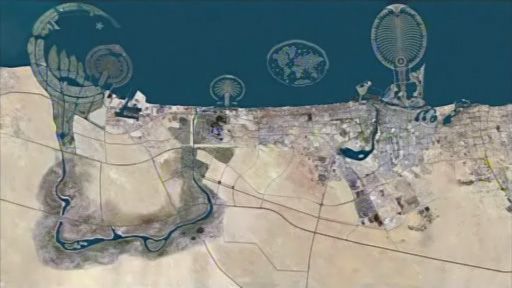
 Share this via demonoid or karagarga
Share this via demonoid or karagarga
at 6:26 PM
Jennifer Baichwal - Manufactured Landscapes (2006)
 MANUFACTURED LANDSCAPES is a feature length documentary on the world and work of renowned artist Edward Burtynsky. Burtynsky makes large-scale photographs of ‘manufactured landscapes’ – quarries, recycling yards, factories, mines, dams. He photographs civilization’s materials and debris, but in a way people describe as “stunning” or “beautiful,” and so raises all kinds of questions about ethics and aesthetics without trying to easily answer them.
MANUFACTURED LANDSCAPES is a feature length documentary on the world and work of renowned artist Edward Burtynsky. Burtynsky makes large-scale photographs of ‘manufactured landscapes’ – quarries, recycling yards, factories, mines, dams. He photographs civilization’s materials and debris, but in a way people describe as “stunning” or “beautiful,” and so raises all kinds of questions about ethics and aesthetics without trying to easily answer them.
The film follows Burtynsky to China as he travels the country photographing the evidence and effects of that country’s massive industrial revolution. Sites such as the Three Gorges Dam, which is bigger by 50% than any other dam in the world and displaced over a million people, factory floors over a kilometre long, and the breathtaking scale of Shanghai’s urban renewal are subjects for his lens and our motion picture camera.
Shot in Super-16mm film, Manufactured Landscapes extends the narrative streams of Burtynsky’s photographs, allowing us to meditate on our profound impact on the planet and witness both the epicentres of industrial endeavour and the dumping grounds of its waste. What makes the photographs so powerful is his refusal in them to be didactic. We are all implicated here, they tell us: there are no easy answers. The film continues this approach of presenting complexity, without trying to reach simplistic judgements or reductive resolutions. In the process, it tries to shift our consciousness about the world and the way we live in it.



Share this via demonoid or karagarga!
at 3:23 PM
Robert Hughes - Visions of Space (2003)
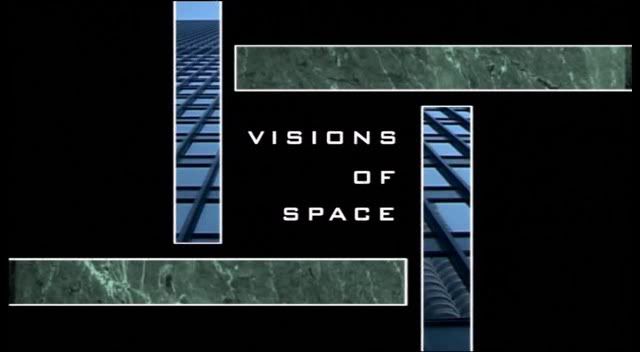 First aired BBC4, 2003; ABC, 2004 In 'Visions of Space', Robert Hughes tackles the work and lives of three remarkable 20th-century architects: Albert Speer, Mies van der Rohe, and Antonio Gaudi - whose work did so much to shape the modern world. Hughes looks at how each one used space in different ways to express our response, respectively, to the power of religion (Gaudi), the power of the State (Speer), and the power of the corporation (Mies van der Rohe).
First aired BBC4, 2003; ABC, 2004 In 'Visions of Space', Robert Hughes tackles the work and lives of three remarkable 20th-century architects: Albert Speer, Mies van der Rohe, and Antonio Gaudi - whose work did so much to shape the modern world. Hughes looks at how each one used space in different ways to express our response, respectively, to the power of religion (Gaudi), the power of the State (Speer), and the power of the corporation (Mies van der Rohe).
Albert Speer: Size Matters
In 1979 Robert Hughes met and interviewed Hitler's architect, Albert Speer, for his landmark series, Shock of the New. Speer died shortly afterwards. Twenty-three years later Hughes discovered the long lost tape of that unique conversation and was inspired to travel back to Germany to examine the legacy of a man who was, for a brief period, the most powerful architect in the world.

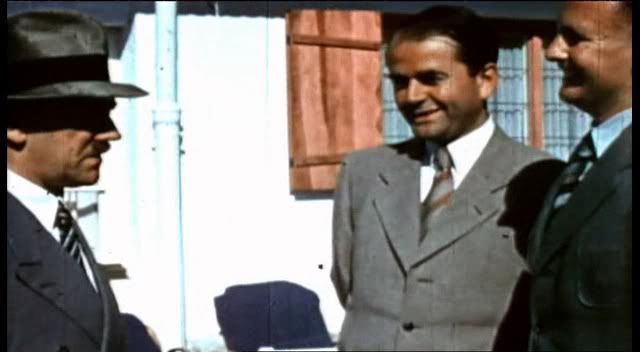


Mies van der Rohe: Less is More
This episode features the German architect, Mies van der Rohe, who moved to America and discovered the face of the modern corporate city. In this highly personal account, Hughes follows in Mies' footsteps looking at how an architect who began his career making kitschy, Hansel and Gretel style houses with pointy roofs, little windows and squat floorplans transformed himself into the master of international modernism - the architect of light and space. Mies is the father of the contemporary vogue for loft living - what he was building in the 1920s still looks futuristic now. Similarly, his New York masterpiece the Seagrams Building provided the blueprint for the modern office building - without Mies no major city on Earth would look as it does. But despite his undeniable impact there is something in Mies' work that Hughes finds shockingly neglectful of real human needs. This master builder could spend days working out how to turn a corner with a skilfully placed beam and totally ignore the legitimate wishes and desires of those who used his buildings.



 Antoni Gaudi: God's Architect
Antoni Gaudi: God's Architect
Robert Hughes returns to Spain to explore the legacy of Antoni Gaudi, the last great cathedral builder of the 20th century.
Gaudi was an intensely Catholic celibate who, despite his austere life, created some of the most sensuous buildings ever known. On his journey through Gaudi's life and work, Hughes (an ex-Catholic himself) explains how a man as religious and conservative as Gaudi could become such an innovative 20th-century giant.





Share Vision's of Space via demonoid or karagarga.
at 2:56 PM
Peter Sutherland - Pedal (2001)
Monday, June 4, 2007
In Pedal, Sutherland documents bike messengers competing in the 2005 Cycle Messenger World Championships in New York City. Going straight to the center of this urban subculture, Sutherland serves up compelling portraits of the competitors from dozens of countries, in motion and at ease, checking out each other’s bags, lingering over modifications to bikes and bodies. Between events like sprints, distance racing, and skid contests, Sutherland shows us the riders’ elegant physicality, complex individuality, and unique community that crosses boundaries of race, gender, age, and class. And he doesn’t shy away from the blood and bruises that come part and parcel with the messenger’s life. Sutherland delves deep into the world of the messengers—a world usually seen from the outside—and returns with a dynamic document that evokes the unbridled anarchy and energy of its inhabitants.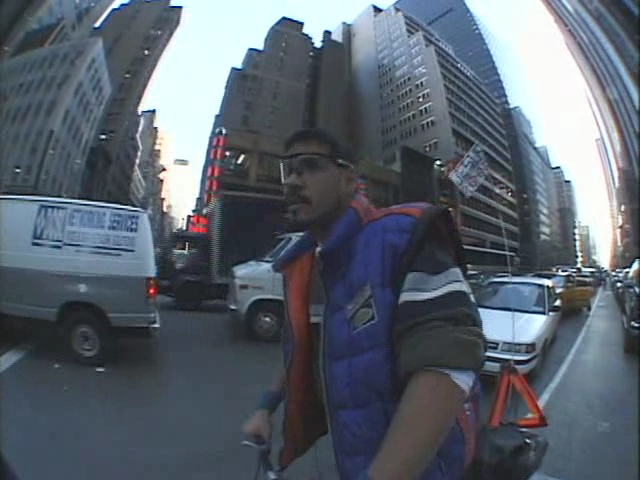
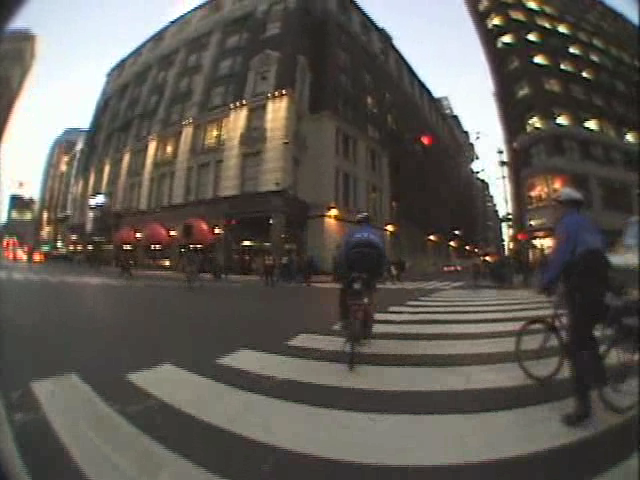
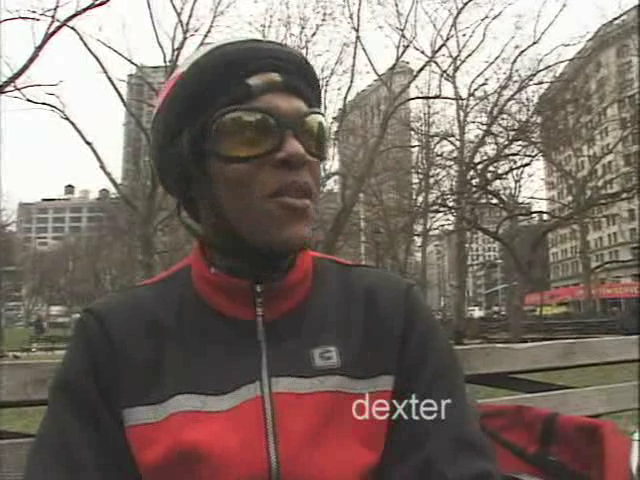
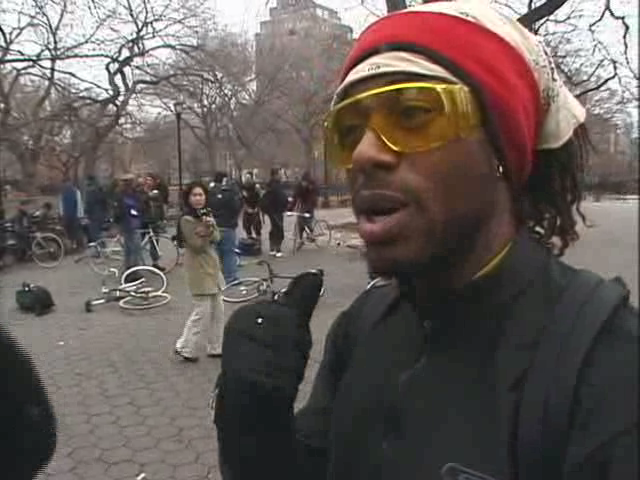


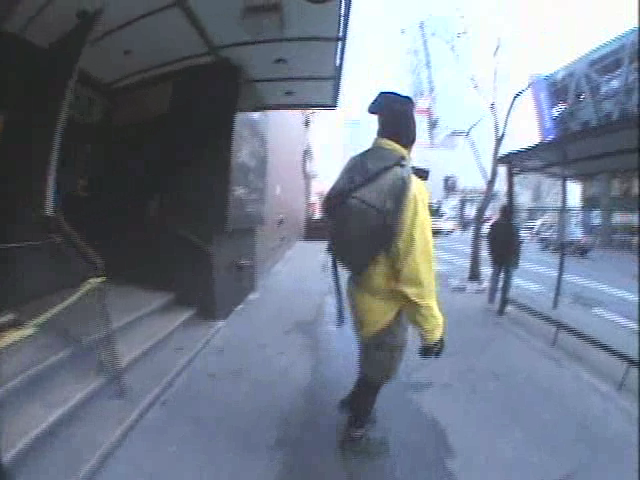

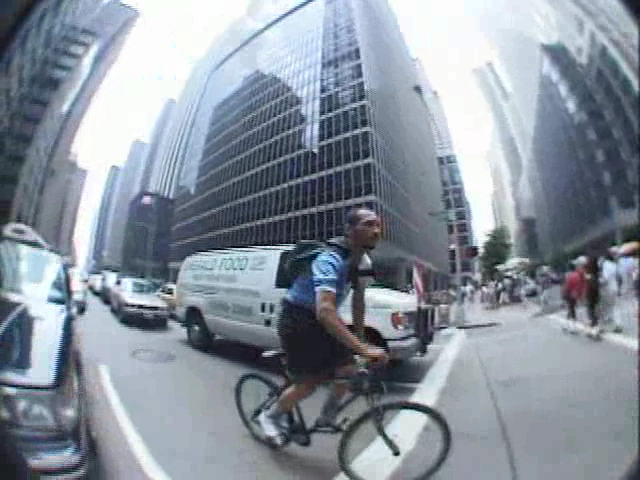
Download pedal at demonoid or karagarga!
ps. i will post a karagarga sign up link in the very near future.
pps. I'm currently getting my hand's on various new object's, fx. a movie about Park Fiction from Hamburg.
at 10:31 PM
Piratbyrån's speech at Reboot 9.0
at 12:47 PM
Interview with Sub Comandante Marcos (1997)
Saturday, June 2, 2007
Comunique On Independent Media
January 31, 1997
A message from Subcomandante Insurgente Marcos to “Free Media” Teach-In, New York City:
We’re in the mountains of Southeast Mexico in the Lacandon Jungle of Chiapas, and we want to use this medium, with the help of the National Commission for Democracy in Mexico, to send a greeting to the “Free Media” Conference that is taking place in New York, where there are brothers and sisters of the independent communications media from the United States and Canada.
At the Intercontinental Encuentro for Humanity and against Neoliberalism we said: A global decomposition is taking place –we call it the Fourth World War - through neoliberalism, the global economic process to eliminate that multitude of people who are not useful to Power, the groups called “minorities” in the mathematics of power, but who happen to be the majority population in the world. We find ourselves in a world system of globalization willing to sacrifice millions of human beigns.
The giant communication media –the great monsters of the television industry, the communication satellites, magazines and newspapers– seem determined to present a virtual world, created in the image of what the globalization process requires.
In this sense, the world of contemporay news is a world that exists for the VIP’s -the very important people, the major movie stars and big politicians. Their everyday lives are what is important: if they get married, if they divorce, if they eat, what clothes they wear and what clothes they take off. But common people only figure in the news for a moment– when they kill someone, or when they die. For the communication giants and the neoliberal powers, the others, the excluded, only exist when they are dead, or when they are in jail or court. This can’t go on. Sooner or later this virtual world clashes with the real world. And that is actually happening: this clash results in rebellion and war throughout the entire world, or what is left of the world to even have war.
We have a choice. We can have a cynical attitude in the face of the media and say nothing can be done about the dollar power that creates itself in images, words, digital communication, and computer systems that invade not just with an invasion of power but with a way of seeing that world, of how they think the world should look. We could say, Well, “that is the way it is,” and do nothing. Or we can simply assume incredulity. We can say that any communication by the media monopolies is a total lie. We can ignore it and go about our lives.
But there is a third option that is neither conformity, nor skepticism, nor distrust. It’s the opption to construct a different way: to show the world what is really happening, to have a critical worldview, to become interested in the truth of what happens to the people who inhabit every corner of this world.
The work of independent media is to tell the history of social struggle in the world. Here in Norrth America –The United States, Canada, and Mexico- independent media has, on ocassion, been able to open spaces even within the mass media monopolies, to force them to acknowledge news of social movements.
The problem is not only to know what is occurring in the world, but to understand it and derive lessons from it, just as if we were studying, not of the past but of what is happening at any given moment in whateever part of the world. This is the way to learn who we are, what is what we want, who we can be, and what we can do or not do.
By not having to answer to the monster media monopolies, the independent media has a life’s work, a political project, and a purpose: to let the truth be known. This is increasingly more important in the globalization process. Truth becomes a knot of resistance against the lie. Our only possibility is to save the truth, to maintain it, and distribute it, little by little, in the same way that the books were saved in Fahrenheit 451; a group of people dedicated themselves to memorize books, to save them from being destroyed, so that the ideas would not be lost.
In the same way, independent media tries to save history –today’s history- tries to save it and tries to share it so it will not disappear. Moreover, it tries to distribute it to other places, so that this history is not limited to one country, to one region, to one city or social group. It is neccesary not only for independent voices to exchange information and to broaden the channels, but to resist the monopolies’ spreading lies. The truth that we build in our groups, our cities, our regions, our countries, will reach full potential if we join with other truths and realize that what is occurring in other parts of the world also is part of human history.
In August 1996 we called for the creation of a network of independent media, a network of information. We mean a network to resist the power of the lie that sells us this war that we call World War IV. We need this network not only as a tool for our social movements but for our lives: this is a project for life, for a humanity that has a right to critical and truthful information.
We greet all of you, recognizing the work you have done so that the struggle of indigenous people is known, and the other struggles are known, so that the great events of this world are seen in a critical form. We hope your meeting is a success and that it results in concrete plans for this network, these exchanges, this mutual support that should exist between cultural workers and independent media makers. We hope that one day we can personally attend your meeting, or perhaps that one day you can have your conference in our territory, so we can listen to your words and you can hear ours in person. For now, well, we take advantage of the help of the National Commission for Democracy in Mexico to use this video to send a greeting.


Share this via karagarga or demonoid!
at 5:45 PM
